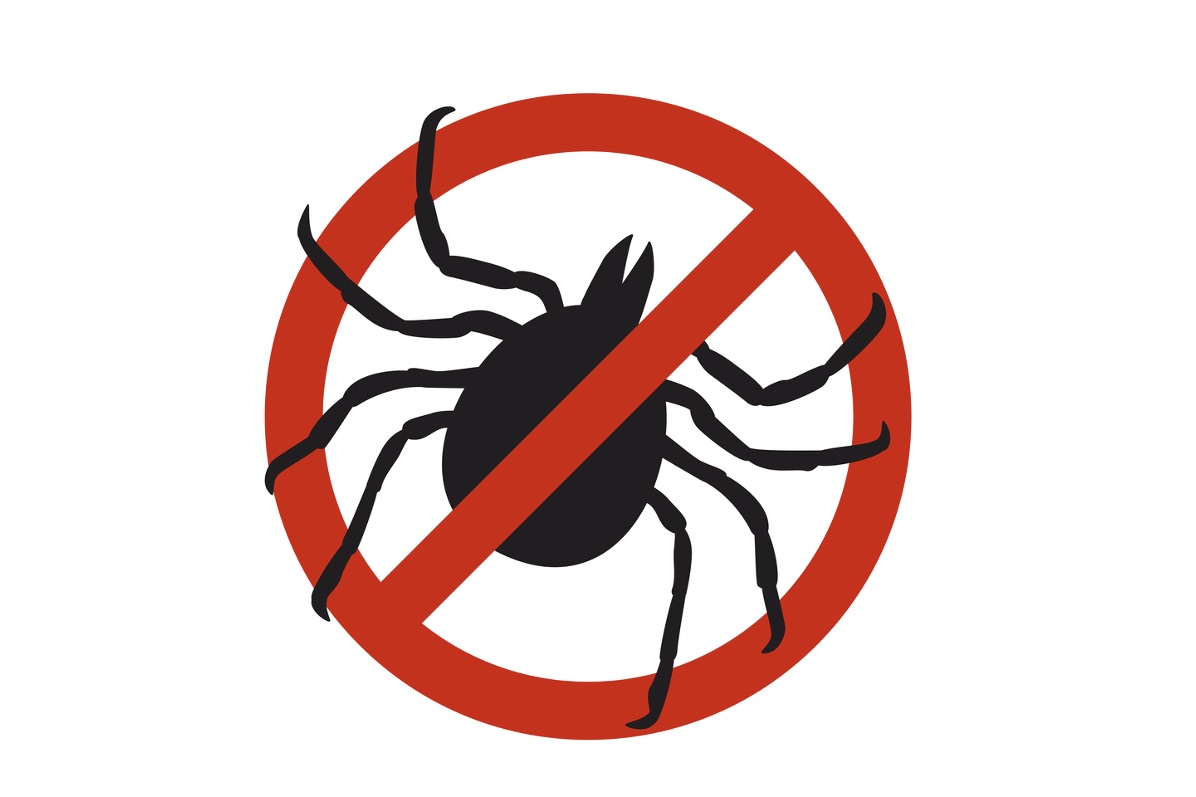Area of focus #3
Education
Additional areas of focus
Drugs and medical devices
Food
Research and epidemiology
Prevention
Goal
Advance awareness and understanding of alpha-gal syndrome (AGS) within key groups
Priority #1
Raise awareness among decision-makers about the needs and policy priorities of the alpha-gal syndrome community

Challenge
- AGS is a newly discovered condition, first described in 2009.22
- Until the CDC’s July 2023 report, the true extent of AGS wasn’t widely recognized.8
- Awareness and understanding of AGS are therefore minimal, even among healthcare providers.11
- The policy framework for addressing the AGS epidemic is urgently needed but has yet to be developed.
- A first step to advancing the policy priorities of the alpha-gal syndrome community is to raise awareness among key decison-makers, including lawmakers and representives of key government agencies.
Opportunity
- Educate elected officials and representatives of key government agencies about AGS and the policy changes needed to support the AGS patient community.
Priority #2
Educate healthcare providers (HCP) to improve timely diagnosis and management of alpha-gal syndrome (AGS)

Challenge
- More than 78% of HCPs have little to no knowledge of AGS, according to a recent CDC survey.11
- Only 5% of HCPs are very confident in their ability to diagnose and manage AGS.11
- Studies in NC46,47 found that:
- Diagnosis of AGS is mostly patient-driven.
- Three-quarters of patients rated their primary care provider as having little to no knowledge of AGS.
- The mean time to diagnosis for AGS patients was over 7 years.
- The CDC, the Congressionally mandated Tick-Borne Disease Working Group, and experts have identified a critical need for increased HCP education to hasten and improve the accuracy of AGS diagnoses, improve patient care, and advance understanding of the epidemiology of AGS.8,13,23
Opportunity
- Secure federal funding for the design, implementation, and dissemination of educational strategies and tools for training healthcare providers about AGS, with a focus on the most impacted states and localities.
- Secure federal funding for the design, implementation, and dissemination of educational strategies and tools for first responders about AGS, with a focus on the most impacted states and localities.
ALIGNMENT WITH NATIONAL PUBLIC HEALTH STRATEGIES AND EXPERT RECOMMENDATION
- In their landmark July 2023 report “Geographic distribution of suspected alpha-gal syndrome cases – United States, January 2017-December 2022,” the CDC called for:
- HCP education to improve timely diagnosis and management of AGS.8
- In their July 2023 report “Health Care Provider Knowledge Regarding Alpha-gal Syndrome — United States, March–May 2022,” the CDC called for:
- Increased HCP education and awareness of AGS to hasten and improve the accuracy of AGS diagnoses, patient care, and the understanding of the epidemiology of this emerging condition.11
- 2020 and 2022 reports from the Congressionally mandated Tick-borne Disease Working Group called for clinician education about AGS.23
- In “Diagnosis & management of alpha-gal syndrome: lessons from 2,500 patients,” expert Scott Commins, MD, PhD:
- The 2024 National Public Health Strategy to Prevent and Control Vector-Borne Diseases in People identified lack of provider awareness about AGS as a concern. It also called for the development of clinician advisories pertaining to the treatment and management of vector-borne diseases.59
Increasing awareness of AGS among healthcare providers is a critical first step in addressing the unmet needs in the diagnosis and management of AGS.
If testing trends continue, and the geographic range of the lone star tick continues to expand, the number of AGS cases in the United States is predicted to increase during the coming years, presenting a critical need for synergistic public health activities including … HCP education to improve timely diagnosis and management.
This analysis indicated a low level of knowledge among U.S. HCPs regarding the diagnosis and management of AGS, with 78% of providers having little to no knowledge of AGS.
Considering the recent description of a continued increase in the number of persons receiving positive alpha-gal–specific IgE (sIgE) antibody test results, growing numbers of suspected AGS cases, and expanding North American ranges of the lone star tick, the knowledge gap found in this survey of HCPs is concerning.
Increased HCP education and awareness of AGS are needed to hasten and improve the accuracy of AGS diagnoses, patient care, and the understanding of the epidemiology of this emerging condition.
Priority #3
Include information about AGS in community outreach efforts regarding tick-borne disease prevention

Challenge
- Based on CDC and state health department data, AGS cases comprise the bulk of the tick-borne disease burden in a large swathe of the U.S.
- For example, in Virginia, a state with a high incidence of both Lyme and AGS:
- On average, there are 1,215 cases of Lyme disease per year and fewer than 300 cases of other infectious tick-borne diseases.24
- In contrast, 1,511 suspected cases of AGS were identified in Bedford County, VA, alone over a five-year period (2% of Bedford County’s population).8
- Other studies suggest that up to 3% of some areas of Virginia may be affected, potentially tens of thousands of individuals.13,14,15,18
- Currently, information about AGS is often excluded from tick-borne disease prevention community outreach efforts.
- Even state health department websites in high-prevalence states often exclude AGS from information on tick-borne disease.
- The CDC has called for the inclusion of AGS in community outreach regarding tick-borne disease prevention, highlighting the number of people affected by AGS and its lifelong health consequences.8
Opportunity
- Include AGS in both federally and state-produced, funded, and supported tick-borne disease prevention community outreach strategies, programs, and tools.
Alignment with National public health strategies and expert recommendation
- In their landmark report “Geographic distribution of suspected alpha-gal syndrome cases – United States, January 2017-December 2022“ the CDC called for:
- The 2024 National Public Health Strategy to Prevent and Control Vector-Borne Diseases in People identified AGS as a serious, potentially life-threatening vector-borne condition of concern. 59
Whether the increasing numbers of suspected AGS cases seen in this study are an indication of increased awareness, increasing emergence, or both remains unclear. Further, these results support including AGS in community outreach regarding tickborne disease prevention efforts, especially because the health consequences of tick exposures leading to AGS could ultimately be lifelong.
Priority #4
Raise awareness about alpha-gal syndrome among disproportionately impacted communities

Challenge
- Some populations are disproportionately impacted by AGS due to:
- Regional differences in the prevalence of AGS
- Environmental risks associated with rural living
- Occupational risks
- Recreational risks
- AGS cases are clustered in high-prevalence areas of the southern, midwestern, and mid-Atlantic United States, including Suffolk County, NY. Up to 3% of the population in the hardest-hit areas may be affected.13,14,15
- Rural populations are at greater risk than urban populations.18 Some data suggests that the risk for rural populations may be 20 times that of urban populations.27
- Populations at occupational risk include members of the military, park rangers, foresters, farmers and ranchers, agricultural laborers, foresters, field biologists, people working in landscape maintenance, and others with high tick exposure. 25,26,27, 28,29,30
- Other at-risk groups include hunters, hikers, campers, gardeners, birders, and others whose hobbies bring them in contact with ticks,27,30 including children who participate in scouts, 4-H, and other outdoor recreational activities and who attend rural schools.
- There is a need to develop prevention strategies, tools, methods, and communications tailored to and targeting communities that are disproportionately affected by alpha-gal syndrome.
Opportunity
- Secure federal funding for the design, implementation, and dissemination of educational strategies and tools for raising awareness about both AGS and tick bite prevention among disproportionately impacted populations.
Alignment with National public health strategies and expert recommendation
- In their landmark report “Geographic distribution of suspected alpha-gal syndrome cases – United States, January 2017-December 2022“ the CDC called for:
- Geographically targeting high-risk populations for public health outreach and HCP education
- The 2024 National Public Health Strategy to Prevent and Control Vector-Borne Diseases in People, which included AGS as a vector-borne condition recognizes that some individuals and populations are at disproportionate risk. Risk factors identified include lack of access to prevention and control strategies, environmental and occupational exposures, and lack of access to health care. The Strategy calls for:
- Developing prevention strategies, tools, methods, and communications tailored to communities that are disproportionately affected by vector-borne conditions 59
- Advance equity for communities that are at disproportionate risk of exposure to vector-borne conditions 59
- Facilitate partnerships across sectors, including disproportionately affected communities, to develop tools and reduce health disparities59
The results of the current study can aid in initiating national surveillance efforts for this emerging allergic condition and for geographically targeting high-risk populations for public health outreach and HCP education.
Higher sensitization rates are reported in tick‐endemic regions and in rural populations as well as in individuals with an occupational outdoor activity such as forestry employees.
Priority #5
Reduce health disparities by raising awareness about AGS among underserved and underdiagnosed populations

Challenge
- The CDC and experts estimate that alpha-gal syndrome is massively underdiagnosed due to its recent discovery and lack of awareness among providers.8,13
- Systemic inequities, including lack of access to information about alpha-gal syndrome, to healthcare, and to tick bite prevention tools, put some populations at disproportionate risk of developing AGS, remaining undiagnosed, and lacking adequate management of symptoms.8,18,31,32,34
- Diagnosis of AGS often involves the need for repeated clinical visits and access to specialized practitioners and takes an average of 7 years.8,46,47
- AGS is most prevalent in lower-income states and economically disadvantaged, rural localities.8,18
- The CDC reports that patients seeking and receiving alpha-gal sIgE testing are more likely to report:
- Flaherty et al observed similar inequities.47
- The CDC has called for further examination of suspected health equity gaps associated with AGS.8
- AGS awareness and tick-bite prevention efforts that target underdiagnosed and underserved populations in high-prevalence areas are needed to remedy inequities in the burden of AGS.
Opportunity
- Secure federal funding for the design, implementation, and dissemination of educational strategies and tools for raising awareness about both AGS and tick bite prevention among underserved and underdiagnosed populations.
Alignment with National public health strategies and expert recommendation
- The CDC has identified health equity gaps associated with AGS, including gaps related to ethnic/language group, income level, and educational attainment.8
- Other studies have identified similar equity gaps.47
- The 2024 National Public Health Strategy to Prevent and Control Vector-Borne Diseases (VBD) in People, which includes AGS as a vector-borne condition, has identified a need to:
- Use an equity-centered approach to prevent and control VBDs and eliminate health inequities. 59
- Advance equity for communities that are underserved and at disproportionate risk of exposure to vector-borne conditions. 59
- Embed health-equity principles into the design, implementation, and evaluation of research, data, surveillance, intervention, and evaluation strategies for prevention and control of vector-borne conditions.59
- Facilitate partnerships across sectors, including disproportionately affected and underserved communities, to develop tools and reduce health disparities.59
- Ensure that support for vector-borne disease programs, including surveillance, diagnosis, detection, prevention, and control are distributed equitably across implementing state, tribal, territorial, and collaborating partners. 59
Studies have documented that most patients seeking and receiving sIgE testing were more likely to report being non-Hispanic White, with higher incomes, and higher educational attainment. The need for repeated clinical visits and access to specialized practitioners, which might span several years before a diagnosis is made, also creates a testing barrier for patients. These known challenges are likely the reason that only a portion of persons with AGS are tested for alpha-gal sIgE antibodies. The suspected health equity gaps associated with AGS warrant further examination.
Everyone should have a fair and just opportunity to attain their highest level of health. Unfortunately, some communities are at disproportionate risk of exposure to VBD pathogens, infection, illness severity, and death. This is due to systemic inequities, including limited access to prevention and control strategies, housing conditions, environmental and occupational exposures, and access to health care.
It is federal policy that the Federal Government should pursue “a comprehensive approach to advancing equity for all, including people of color and others who have been historically underserved, marginalized, and adversely affected by persistent poverty and inequality.”
